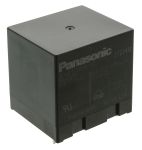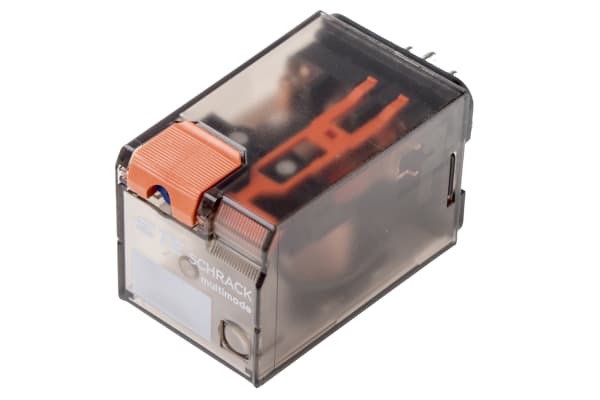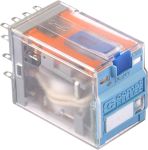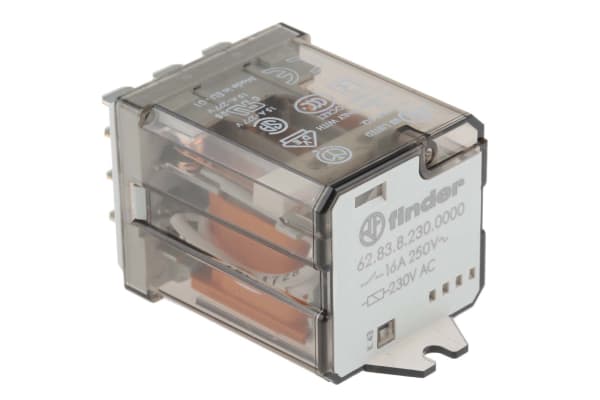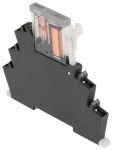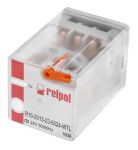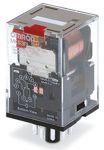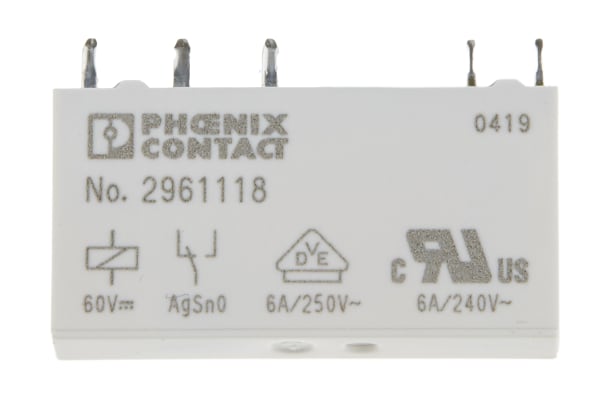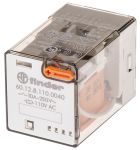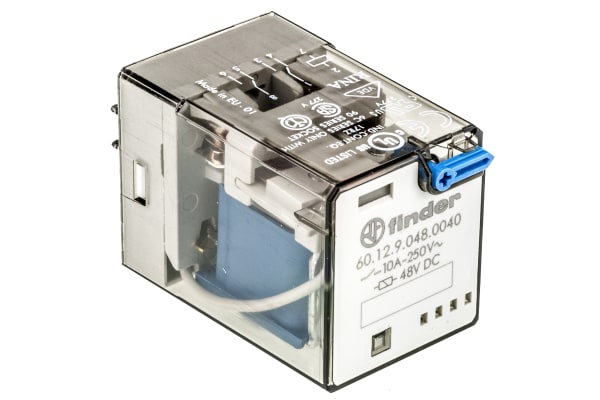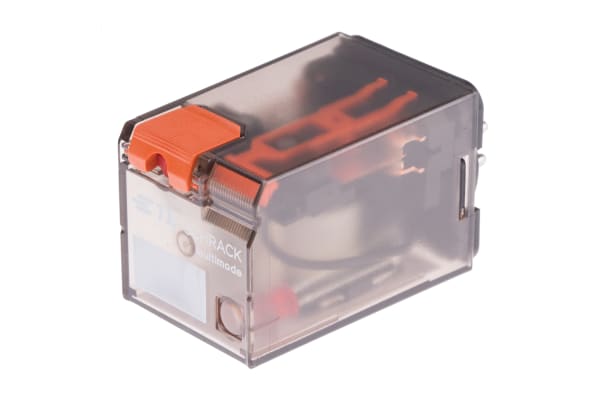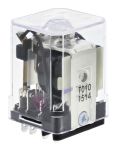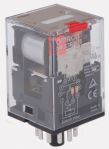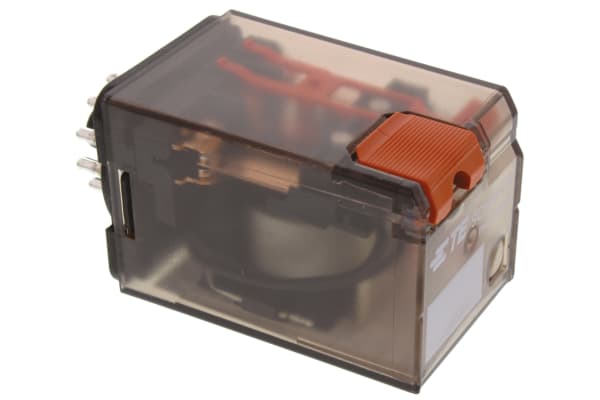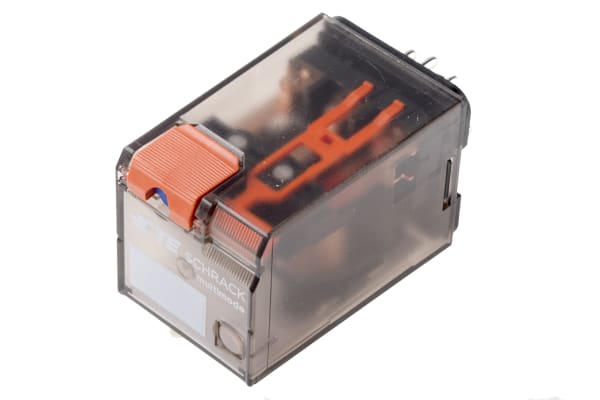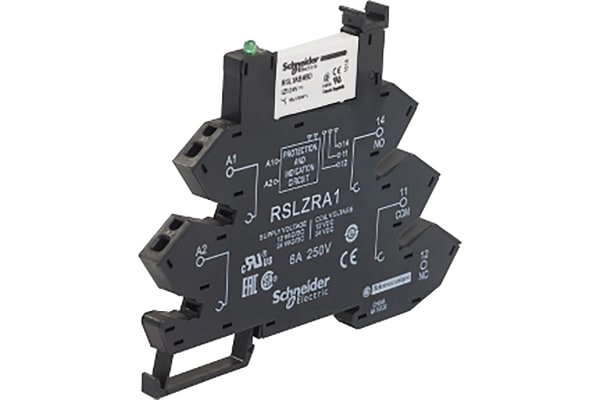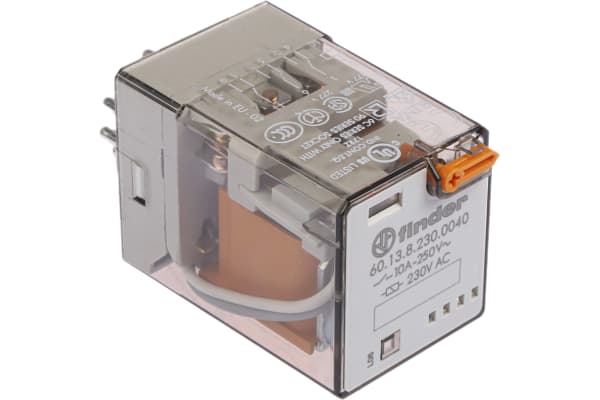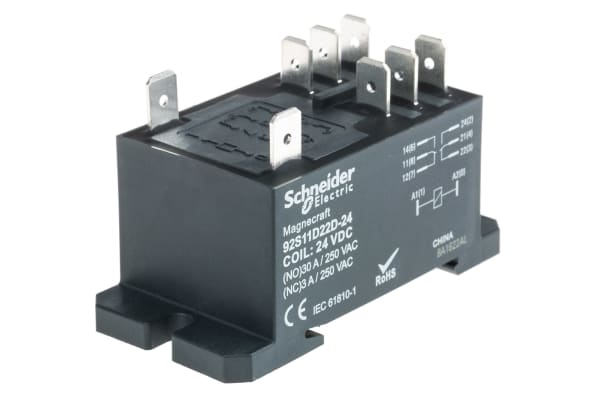Non-Latching Relays
Relays are electrical switches that are operated by electrical impulses with the primary function to open and close a circuit, they can also be referred to as industrial switches. There are 2 main types available, latching and non–latching relays.How do non-latching relays work?Non-latching relays are in a normally closed (NC) position and will stay in this state without power. When power passes through the circuit, the relay switched to a normally open (NO) position by using an internal coil to generate a magnetic force, holding this NO position. Once the current is turned off, it returns to the NC position. This makes non-latching relays well suited to push-button applications like keyboards and micro-controller input buttons.What are non-latching relays used for?Non-latching relays are highly durable and versatile components, making their performance long lasting and suitable for use in a wide range of applications, such as:Automotive enginesHousehold appliancesIndustrial machineryMedical equipmentTelecommunications equipmentWhat is the difference between latching and non-latching relays?Both types of relays in similar in design and function, however, a significant difference between them is that a latching relay will remain in the last position it when it was last powered, whereas a non-latching goes back to its normal position. This makes each more type of relay suitable for different applications. Considerations when selecting a relayWhen choosing a relay, it is important to consider a number of specifications to ensure it is fit for purpose, some factors include:Coil voltage – the required voltage to actuate the switching mechanism. If a voltage is too high this could damage the components, if it is too low then it will not actuate. Contact configuration – This is the state the contacts are in without power. For example SPST, single pole single throw.Contact material – the relay contacts are available in many materials that have certain properties. Common materials are gold, silver, tin oxide and nickel Coil power – the amount of power (watts) the coil operates at. This must match the power in the circuit for correct function. Coil resistance – the amount of resistance (ohms) in the circuit that the coil creates.
-
Panasonic, 12V dc Coil Non-Latching Relay SPNO, 48A Switching Current PCB Mount Single Pole, HE1AN-P-DC12V-Y5
IDR300,195.18 -
TE Connectivity, 12V dc Coil Automotive Relay SPDT, 30A Switching Current Plug In Single Pole, 1432787-1
IDR98,386.82 -
TE Connectivity, 48V dc Coil Non-Latching Relay 3PDT, 10A Switching Current Plug In, 3 Pole, MT321048 7-1393091-1
IDR345,088.10 -
Releco, 24V dc Coil Non-Latching Relay 4PDT, 5A Switching Current Plug In, 4 Pole, C9-A41X / DC 24 V
IDR274,602.02 -
Finder, 230V ac Coil Non-Latching Relay 3PDT, 16A Switching Current Plug In, 3 Pole, 62.83.8.230.0000
IDR337,536.02 -
Omron, 24V dc Coil Non-Latching Relay SPDT, 6A Switching Current DIN Rail Single Pole, G2RV-SR500 DC24
IDR231,387.34 -
Omron, 240V ac Coil Non-Latching Relay DPNO, 25A Switching Current Panel Mount, 2 Pole, G7L-2A-T 200/240AC
IDR257,504.95 -
Relpol, 24V ac Coil Non-Latching Relay 3PDT, 10A Switching Current Plug In, 3 Pole, R15-2013-23-5024-WTL
IDR417,042.64 -
Omron, 120V ac Coil Non-Latching Relay 3PDT, 10A Switching Current Plug In, 3 Pole, MKS3PI-5 AC120
IDR280,056.30 -
Phoenix Contact, 60V dc Coil Non-Latching Relay SPDT PCB Mount Single Pole, 2961118
IDR347,395.68 -
Finder, 110V ac Coil Non-Latching Relay DPDT, 10A Switching Current Plug In, 2 Pole, 60.12.8.110.0040
IDR376,030.65 -
Finder, 48V dc Coil Non-Latching Relay DPDT, 10A Switching Current Plug In, 2 Pole, 60.12.9.048.0040
IDR346,556.56 -
TE Connectivity, 230V ac Coil Non-Latching Relay DPDT, 10A Switching Current Plug In, 2 Pole, MT228230 7-1393090-1
IDR362,185.17 -
TE Connectivity, 24V dc Coil Non-Latching Relay 3PDT, 10A Switching Current Plug In, 3 Pole, KUP-14D15-24
IDR380,960.48 -
Omron, 110V ac Coil Non-Latching Relay 3PDT, 10A Switching Current PCB Mount, 3 Pole, MKS3PIN-5 AC110
IDR252,155.56 -
TE Connectivity, 24V dc Coil Non-Latching Relay 3PDT, 10A Switching Current Plug In, 3 Pole, MT323024 8-1393091-4
IDR364,073.19 -
Finder, 110V ac Coil Non-Latching Relay 3PDT, 10A Switching Current Plug In, 3 Pole, 60.13.8.110.0040
IDR366,275.88 -
TE Connectivity, 110V dc Coil Non-Latching Relay 3PDT, 10A Switching Current Plug In, 3 Pole, MT321110 7-1393091-4
IDR370,576.37 -
Omron, 120V ac Coil Non-Latching Relay 4PDT, 5A Switching Current Plug In, 4 Pole, MY4N-CR 110/120AC(S)
IDR360,926.49 -
Schneider Electric, 24V ac/dc Coil Non-Latching Relay SPDT, 6A Switching Current Single Pole, RSL1PRBU
IDR416,518.19 -
Siemens, 24V dc Coil Non-Latching Relay 3PDT, 8A Switching Current Plug In, 3 Pole, LZS:PT3A5L24
IDR470,012.09 -
Finder, 230V ac Coil Non-Latching Relay 3PDT, 10A Switching Current Plug In, 3 Pole, 60.13.8.230.0040
IDR300,195.18 -
Omron, 110V ac Coil Non-Latching Relay 3PDT, 10A Switching Current PCB Mount, 3 Pole, MKS3PI5AC110
IDR213,241.37 -
Schneider Electric, 24V dc Coil Non-Latching Relay DPDT, 20A Switching Current Panel Mount, 2 Pole, 92S11D22D-24
IDR365,017.20



